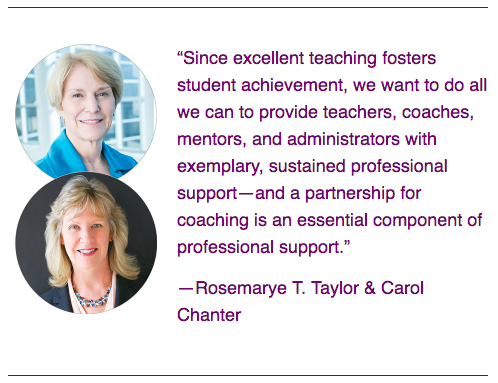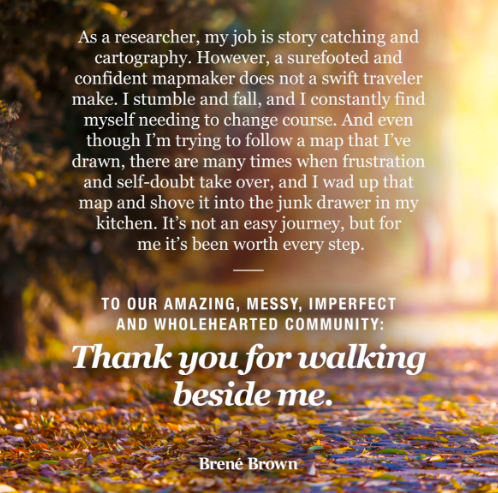Welcome back for another #D100bloggerPD crew book study. I always take pleasure in starting our book study kickoff with an introduction of the crew. We consist of an assortment of Berwyn South School District teacher and administrator learners who enjoy blogging, are smitten with social media and make use of our PLNs as an irreplaceable source of powerful content, hence the hashtag #D100bloggerPD. We devote ourselves to staying globally connected. The crew embraces change, strives to better ourselves professionally, desires to join forces with our PLNs to share what we learn, and aims to inspire others (#D100inspires) because we are better together.
Our #D100bloggerPD book study is dedicated to Brené Brown's Daring Greatly: How the Courage to Be Vulnerable Transforms the Way We Live, Love, Parent, and Lead. Even though this is the first book I've read by Brené Brown, it certainly won't be the last. (I've already started Dare to Lead: Brave Work, Tough Conversations, Whole Hearts!) If I were to have read this book and watched Brown's TEDTalk sooner, the opportunity for an awakening would have come to me a few years prior to 2019. Live and learn, I guess. :)
Daring Greatly is a *food for the soul* type of book. I've already witnessed how Daring Greatly is an invaluable, necessary, hopeful and inspiring book. It highlights Brené Brown's years of research on vulnerability and shame and her commitment to dispel the myth that vulnerability is a weakness. This post focuses on the first sections of her book, including What It Means to Dare Greatly, Introduction: My Adventures into the Arena, and Chapter 1- Scarcity: Looking Inside Our Culture of "Never Enough." I also added a few thought-provoking quotes I found within the Facebook group, which are applicable to the first portions of the book. Let's get started.
What It Means to Dare Greatly
Right out of the gates, Brown voices, Rather than sitting on the sidelines and hurling judgment and advice, we must dare to show up and let ourselves be seen. This is vulnerability. This is daring greatly (p. 2).
Brown's book centers around Theodore Roosevelt's speech given in 1910, which uses the term daring greatly and the idea that we must be courageous and willing to engage in order to step into life's arena.
Daring greatly is about getting uncomfortable, being unsure and feeling exposed. It's about raw emotions out in the open. It's being truly seen by others. #VulnerabilityRocks ;)
Introduction: My Adventures into the Arena
According to Brown, she's spent her entire life attempting to outsmart vulnerability (p.7). In the introduction, Brown shares a take away from her years studying social work. Her original view was that social work is all about fixing things, but in actuality, she's learned it's about leaning in and being able to connect. Humans are all about connection. We are hardwired to connect with others, ...and without it there is suffering. I wanted to develop research that explained the anatomy of connection (p.8).

Brown believes our human experiences can lead us to wholehearted living. Wholehearted people are those who believe in their worthiness and are most resilient to shame.
As Brown discusses her adventures into the arena, she mentions her well-known TEDTalk, The Power of Vulnerability. She was asked to dare greatly in June of 2010 at TEDxHouston. Brown explains her agreement to speak at TEDxHouston stemmed from faith in her research, not necessarily from self-confidence. Vulnerability would take me where I wanted or maybe needed to go (p.13). Even though Brown claims she had the worst vulnerability hangover after the TEDTalk, the sharing of her research caused her to write Daring Greatly. I'm so glad she did because it has given me, and I'm sure so many others, clarity on being vulnerable to live life to the fullest.

We all have the power and desire (even, if unknowingly, at first) to unlock our own doors to a fully-engaged self. Challenges of stepping into the arena have been experienced by us all. I found it reassuring to read Brown's own challenging moments, including her TEDTalk experience, as well as the personal stories shared by those connected to her research.
When I think about my educational career, from entering the teaching field as a student teacher, to changing grade levels as a classroom teacher, to becoming a Reading Specialist and now a Literacy Coach, I've unquestionably experienced the arena. During my journey, I've floundered in the zone of uncertainty, become well-versed in awkward moments and have been exposed to minor and major failures along the way.
A daring greatly experience I'm grateful for includes my colleague and friend, Michelle over at BigTime Literacy. A handful of years ago, we decided to present together at the Illinois Reading Council Conference, which was new to me, but something Michelle had done before. You see, Michelle dares greatly on a daily basis, and since I admire her and her courageous acts, I followed Michelle's lead and jumped on board.


I'm not a huge fan of public speaking. As Jerry Seinfeld says, people's number one fear is public speaking. My agreement to present in front of strangers at a highly attended conference was a huge step towards leaning in to all vulnerability has to offer. After taking that first step into the arena, I've continued to present at conferences (once more with Michelle at our district's iEngage Conference), as well as at district Institute Days, staff meetings and more. Thanks, Michelle! ;) Beyond this specific experience, I want you to know every member that has popped in and out of the #D100bloggerPD Crew over the years is in the arena beside me. We all dare greatly and have given support to one another. I commend them all!
Brown states the core of Daring Greatly is this: What we know matters, but who we are matters more. Being rather than knowing requires showing up and letting ourselves be seen (p.16).
Chapter 1- Scarcity: Looking Inside Our Culture of "Never Enough"
In the first chapter of the book, Brown takes a look at narcissism through the lens of vulnerability and the idea that people have a shame-based fear of being ordinary. She discusses how social media and reality television shows have distorted our sense of the world and has impacted some people to believe they are only as good as the number of likes on social media (p.23). This distorted outlook leads to a culture of scarcity, or the "never enough" problem. She states the culture of scarcity ...allows us to accurately identify the greatest cultural influence of our time- the environment that not only explains what everyone is calling a narcissism epidemic, but also provides a panoramic view of thoughts, behaviors, and emotions that are slowly changing who we are and how we live, love, work, lead, parent, govern, teach, and connect with one another (p.24).
During her research, Brown asked people to respond to the following phrase: Never__________ enough. She explains this view of scarcity is thriving because we live in a culture where everyone is hyperaware of lack (p.26).
We often feel self-defeated even before our feet hit the floor in the morning. Our constant comparing of ourselves to others is dangerous because, often times, we have a fictional account of how others are living or how "good they have it". We begin to set artificial goals for ourselves and then struggle to achieve them.
This formula of shame, comparison and disengagement is not only found in the general public, but also in family, school and community cultures. Brown explains how we must all be willing to push back and challenge the culture of scarcity. We must begin living a wholehearted life, one which centers around the belief that we are all worthy and not inadequate (p.29). We must stand together to be brave and to dare greatly. The vulnerability myths that fuel scarcity will be discussed in the next chapter, so stay tuned.
Thank you for stopping by Literacy Loving Gals to support the #D100bloggerPD book study. As the study continues in the upcoming weeks, the hyperlinks to each #D100bloggerPD crew member's post will be added below to keep Brene Brown's insights from Daring Greatly in one spot. We hope you continue to follow along with us. Next up is the amazingly talented Michelle Brezek over at BigTime Literacy with Chapter 2: Debunking the Vulnerability Myths.

























































































